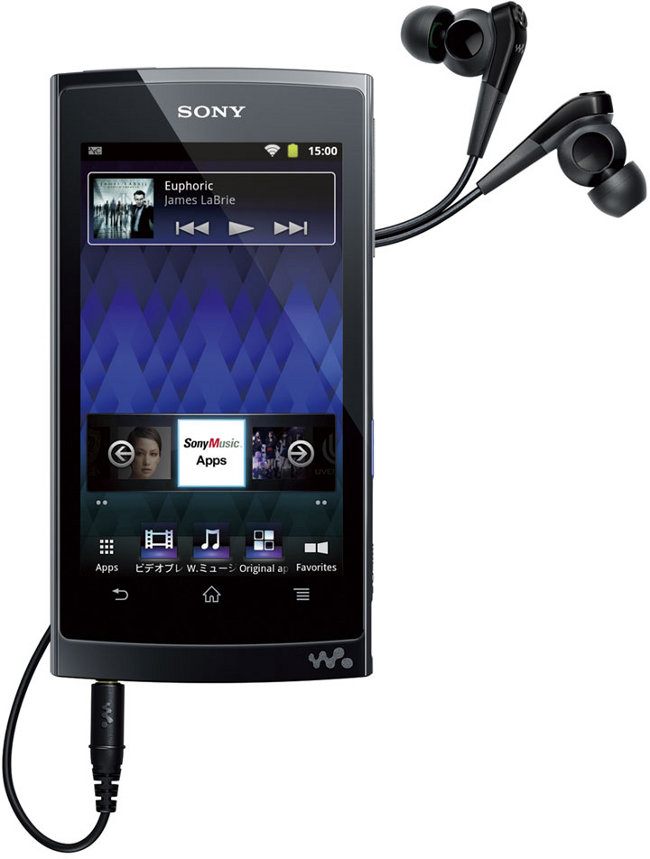A few months back, I would have never thought I would post about Microsoft and Windows in an embedded software blog, except for the rare mention of Windows CE or Windows Embedded products. But it now seems Windows 8 will actually focus on products that were previously almost exclusively ARM based such as tablets and smartphones. I have already posted about Windows 8 Tablet and Smartphones demo at the build conference and today I’ll discuss a little bit about NFC support in Windows 8. Windows 8 will support NFC (Near Field Communication) with NXP PN544 NFC controller chip. NXP PN544 is also the NFC solution used in the Windows 8 tablets, made by Samsung, which are being distributed to attendees of Microsoft’s Build Windows conference 2011. The NFC use cases available with Windows 8 include: Windows 8 device pairing (e.g. Bluetooth headsets and speakers) Data sharing (e.g. digital business cards) […]
Window 8 ARM Platforms at Build Conference 2011
Yesterday, I mentioned the Nvidia Tegra 3 tablet running Windows 8 which is currently showcased at Build Conference 2011 and they also had a Tegra 3 laptop running Windows 8. But Nvidia was not the only company showing off ARM based processors running Windows 8. There were at least 2 other companies, namely Qualcomm and Texas Instruments. Qualcomm showcased a Snapdragon MSM8660 (Dual core 1.2 GHz) Tablet running Windows 8 and announced that the first batch of Windows 8 PC will be based on the Snapdragon processor. Texas Instruments brought a Windows 8 Tablet based on OMAP4430 (dual core 1 GHz) developed in partnership with Quanta. Jean-Luc Aufranc (CNXSoft)Jean-Luc started CNX Software in 2010 as a part-time endeavor, before quitting his job as a software engineering manager, and starting to write daily news, and reviews full time later in 2011. www.cnx-software.com
Intel and Google to work on Android for Atom
Intel officially announced it will collaborate with Google to optimize the Android OS for Intel’s Atom processor platform in order to help Intel entering the smartphone market. In his keynote on the 13th of September – the first day of the Intel Developer Forum 2011 – Intel CEO Paul Otellini announced the partnership with Google to support Android on Atom processors and said the first Intel-based smartphones will be available in the first half of 2012. Paul Otellini demoed Intel’s Android smartphone reference platform running Android 2.3 (Gingerbread). The phone is 9.5mm thick, had an HDMI output, NFC support and features Intel’s 32nm Medfield processor which is said to include a newer generation GPU. Intel also showed off the new ISP (Image Signal Processor) capabilities in Medfield which is capable of capturing up to 20 fps at 1600 x 1200. However, the reference platform could only deliver 10 fps from […]
Microsoft demoes Windows 8 on Tegra 3 Tablet
Microsoft demonstrated several Windows 8 features running on a quad-core NVIDIA Tegra 3 tablet at the company’s BUILD developer conference in Anaheim, California. During the event, Mike Angulio – Microsoft’s VP of Windows planning – demonstrated: Windows 8 devices’ ability to instantly switch on and off The new Windows 8 user interface, designed to work equally well with both touch-based tablets and keyboard/mouse-based PCs New applications, mostly written in HTML5, which are always running in the background Platform agnostic applications (running on both ARM and x86) Anguilo also emphasized that all Windows 8 applications will feature hardware accelerated graphics so that developers will not need to do additional work to support hardware acceleration and their applications will automatically take advantage of graphics on both ARM and x86 platforms. Source: Microsoft Wows BUILD Crowd with Windows 8 on Quad-Core NVIDIA Tegra Tablet You can watch Windows 8 Demo from Build Conference […]
Sony Announced the Android Walkman NW-Z1000
Sony Corp announced three new series of its Walkman portable music including the “NW-Z1000” series powered by Nvidia Tegra 2, equipped with an 4.3-inch TFT LCD panel and running Android 2.3 (gingerbread). NW-Z1000 user interface is slightly customized and its sound quality is improved thanks to a digital amplifier chip called “S-Master MX.” The changes made to the UI include shortcut icons for Sony’s music applications and video players at the bottom of the screen. The NW-Z1000 has wireless LAN capability, GPS and sensors such as acceleration sensor and is pre-installed with GMS (Google Mobile Service) which includes Google Maps, YouTube and Android Market. Here are the specifications of the NW-Z1000 series Walkmans: Android 2.3 with access to the Google market YouTube, Gmail, Google Maps and various Sony apps pre-installed (Sony Music Player, Photo Player, etc.) 4.3-inch LCD with 480×800 resolution NVIDIA Tegra 2 dual core mobile CPU (1GHz) 512MB main […]
Ziilabs Unveils Low Cost Jaguar3 Android Tablet Reference Designs
Earlier this May, Ziilabs announced the ZMS-20 dual core processors targeted at Android Honeycomb tablets. They have now unveil the 3rd generation of Android Tablet reference designs based on ZMS-20 and ZMS-40 called Jaguar3. Here’s an excerpt of the press release: ZiiLABS, a pioneering media processor and platforms company (a wholly-owned subsidiary of Creative Technology Ltd), today introduced its JAGUAR3, the most powerful 3rd Generation Android 3.2 tablet series. JAGUAR3 is a series of ultra-slim, ultra-lightweight and stylish 10.1” tablet reference designs targeted at the OEM markets. With over a decade of designing experience in portable mobile devices, Creative provided the ergonomic and sexy design of this series of JAGUAR3 tablets. ZMS-20 StemCell Processors JAGUAR3’s superior performance, low power consumption and rich feature set comes from the dual-core 1.5GHz ARM Cortex-A9 based ZMS-20 StemCell Processors. ZMS-20 has another 48 StemCell Processing cores within, which effectively make it into a 50-core processor. […]
Google Devfest Comes to Southeast Asia
Google is coming to Southeast Asia with SE Asia Google DevFests 2011 to provide keynote and hand-on sessions on Android, Cloud, Maps, Apps and Chrome. You can now register to those events in Manilla, Chiang Mai and Kuala Lumpur.Jakarta and Singapore will be open for registration very soon. Here are the dates for the events in SE Asia: Manila: 19 September 2011 Chiang Mai: 24 September 2011 Kuala Lumpur: 29 September 2011 Singapore: 12 November 2011 Jakarta: 16 November 2011 Currently, the venue details and agenda are not available as they have just opened registration and probably wait to see how many attendees there will be and what the attendees wants to learn about (You can select the Google products you are interested in during registration). Update: The agenda and venues are now available for Manilla, Chiang Mai and Kuala Lumpur. The Agenda is different from the one India shown […]
Android 2.3.4 Release For ST Ericsson Snowball Development Board
Igloo Community – the team developing for ST Ericsson Snowball Nova A9500 development board – has released the first version of Android 2.3.4 for the board. It can be downloaded at http://igloocommunity.org/download/android/images/20110910/. Here are the main features for this release: Based on Android 2.3.4 HDMI/DVI-D display support Graphics acceleration with the Mali 400 GPU Bluetooth support Multimedia acceleration Ethernet connectivity microSD card support Sensors support ADB over ethernet (by default) and over USB OTG port and the Known issues: WLAN connectivity is disabled in the UI due to startup problems with the interface. Audio recording does not work Consecutive audio playback might not work Potrait mode does not work (rotating the device corrupts screen until rotated back) Might be a temporary problem, but the browser crashes on the default google page when loading finishes. Other pages seem to work fine, so interrupting loading or going through the search acts as […]








